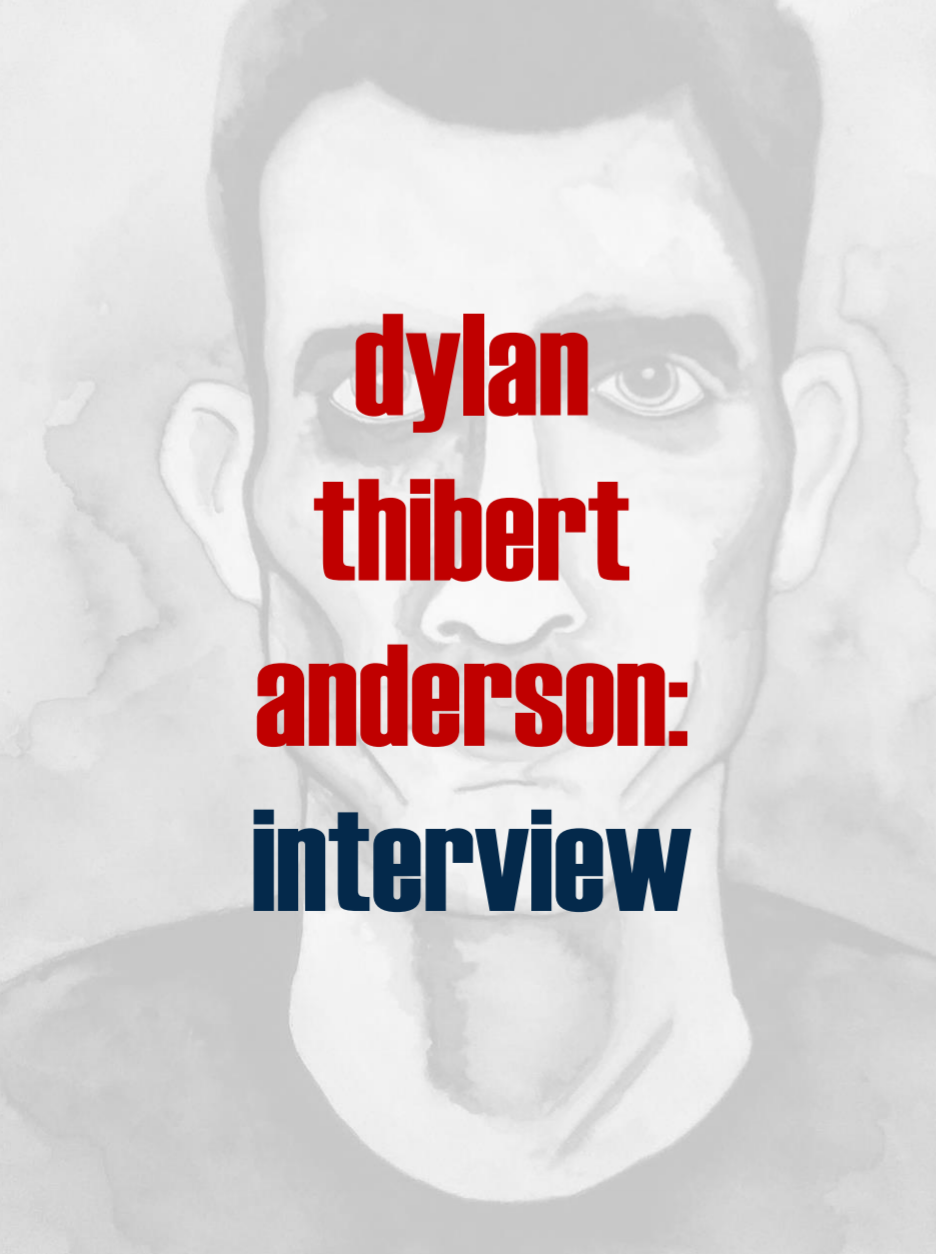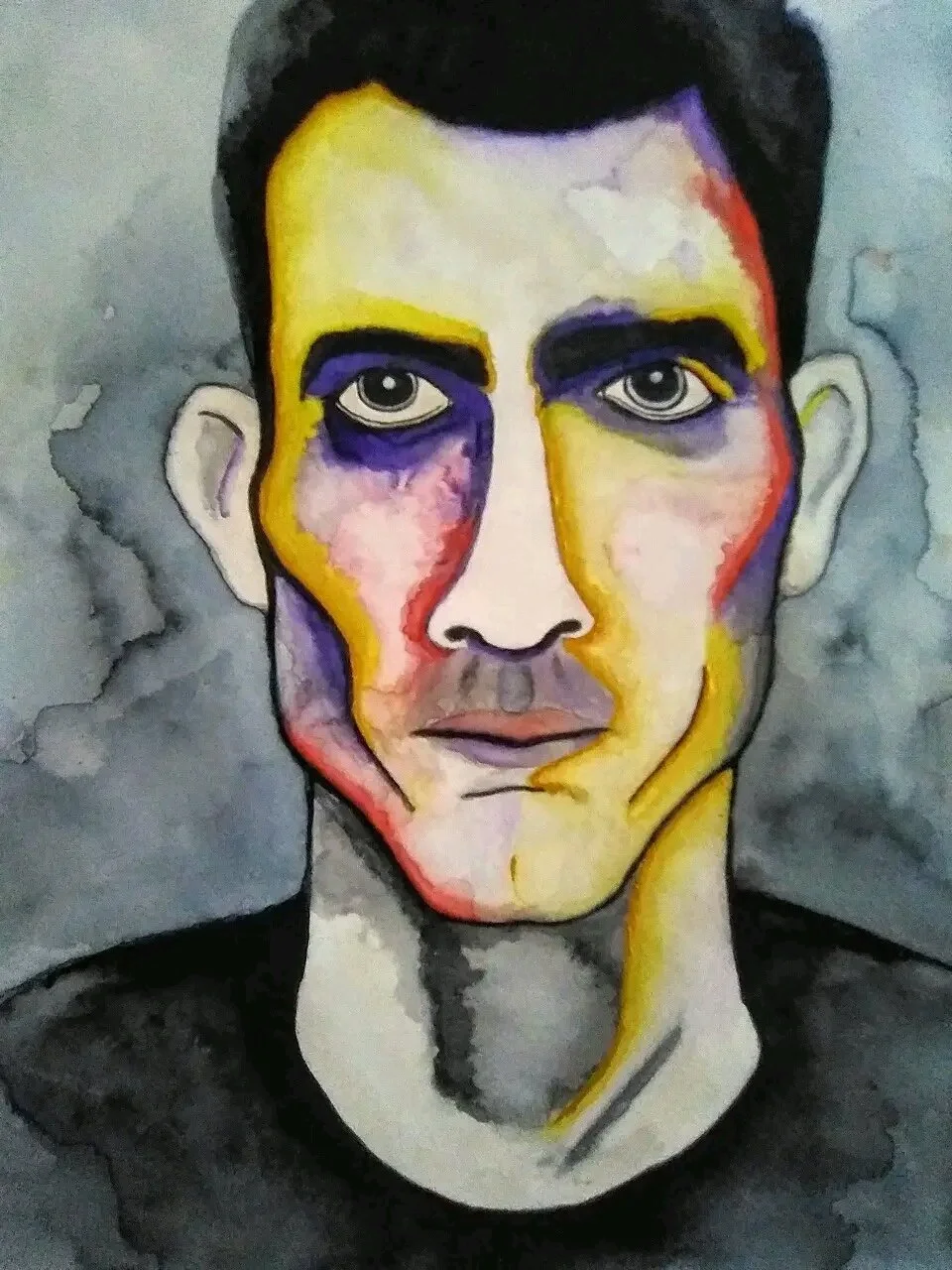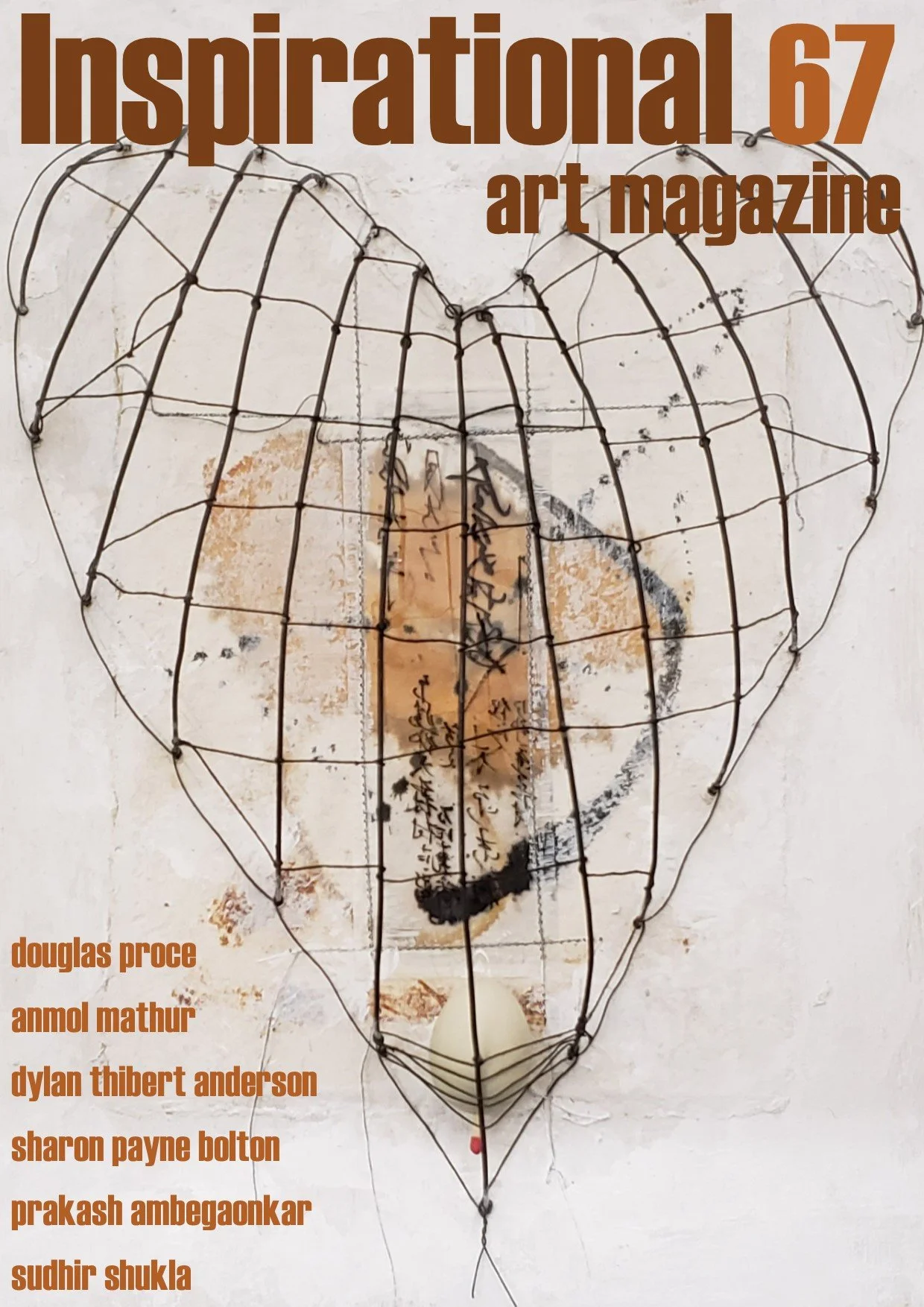Update #10
dylan thibert anderson: interview. Dylan is a visual artist with a unique
observational eye. In an exclusive interview with Inspirational art magazine, Dylan tells us about his work—how he started, how he works, and what being an artist means to him.
What was your route towards becoming a visual artist?
dta: I was guided by a desire to create an identity as an artist. I was looking to
communicate a message visually. The internet helped catapult my career forward and absolutely provided me a route to becoming a visual artist. I have a brilliant and talented artist who is my mother and she has been a great support along the route. From childhood I began drawing in colouring books featuring Batman, Robin, and the Riddler. As a teenager I began watercolour and acrylic painting as well as pen and ink calligraphy. Later on I began editing photographs and video.
Although a multidisciplinary and conceptual artist, what is it about painting
specifically that so attracts you?
dta: I’ve always respected other artists who paint above all others. I think of the
work of Van Gogh, Kahlo, Rembrandt and artists who overcame the worst adversity imaginable such as the Foot and Mouth painters. I’ve romanticized watercolour stains and oil abstractions. While using acrylic paint I always appreciated the versatility that I could use it as an oil paint or watercolour.
I’ve often incorporated natural and synthetic clay to build dimension and texture. I’ve also included metallic paints like gold and silver as well as other reflective materials. I admire textile artists and I have an interest in design patterns like tartan and paisley for example. My brush stroke while painting particularly with watercolour displays my ability to control my emotions.
You have called yourself an iconographer. What do you mean by the term
iconographer, and how does it reflect in your work?
dta: First and foremost, I am an icon in my own right. My catholic upbringing
allowed me the authority to label myself an iconographer. Religious iconography is the most immediate and well known definition of iconography. It’s my ability to see my muse as a kind of demi god, immortal, and untouchable. When a muse appears in my paintings my ability as an iconographer is reflected in the way that muse becomes canonized and eternally cemented in the Zeitgeist. In my paintings, icons like signs and symbols are a means of communication. Similar to Pop artists such as Warhol or Lichtenstein. An iconographer relies heavily on their own knowledge of signs, symbols, and icons. The iconographer uses their own psychological, socio-political, and technological language in their visual artwork. I use icons in the same way a Pop psychologist uses archetypes. When I paint a portrait for example, my subjects become icons and they play a role or archetype
and like any other symbol or sign they work to juxtapose or reinforce the concepts.
What do you think the role of an artist should be in the world we live in?
dta: I believe an artist’s role should be to push boundaries and shape our
perception of the world. I believe an artist’s role should be to inspire and support other artists to move humanity forward and help us grow creatively.
I believe an artist’s role should be to take us to places we’ve never been, to meet new people, and to have ideas and experiences we may not have had otherwise.
Are your work projects planned in advance, or is there more of an element of
spontaneity in the process?
dta: In the beginning I was an experimental artist and I practiced free thought
sketch work. I was documenting my subconscious. I discovered inevitably that it
didn’t matter what I was creating just as long as I was strengthening my natural
ability as a seer. My life has been cyclical as an artist and my artwork is alive and spontaneous as the words flow from my heart in this moment.
How would you like others to view and interpret your work, if at all?
dta: I prefer the public and my audience to consider the year my paintings were exhibited, their titles, the subjects and locations, without thinking of who I am or who they think I am. I hope my paintings speak to one another and that the viewer notices the full extent of my intentions.
Are you working on anything specifically at the moment?
dta: No.
Do you have any upcoming exhibitions, shows or events that you’d like to
mention, on or offline?
dta: No.
And where can you be found online?
www.dylanthibertanderson.com
Twitter, Facebook, Instagram, and YouTube
All Inspirational issues can be viewed and purchased from the following link: https://payhip.com/johnhopper/collection/inspirational
Subscription to Inspirational magazine: 1, 3, 6, 12 monthly plans are available from the following link: https://payhip.com/b/MNp6
Inspirational has a dedicated site, which can be found at: https://inspirationalmagazine.blogspot.com – as well as a facebook page where everything Inspirational can be found: @djhinspirational, as well as an Instagram space: @inspirationalartmagazine
Inspirational magazine is copyrighted and therefore all rights are reserved for
both the magazine and the featured artists.
Inspirational is always open to submissions from visual artists in any discipline; as well as from art organizations, platforms, groups. So please feel free to contact the editor of Inspirational, directly at: d.johnhopper@gmail.com


